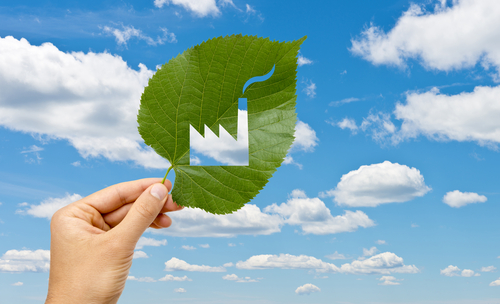The U.S. Department of Energy (DOE) has released the Fall 2021 Better Buildings, Better Plants progress update. The report highlights more than 250 manufacturers and water utilities that have introduced energy efficiency and decarbonization measures, cumulatively saving $9.3 billion in energy costs and 1.9 quadrillion British thermal units (Btus)—more energy than the state of Wisconsin consumes in a year.

According to the DOE, the Better Buildings, Better Plants Program aims to decarbonize the industrial sector, and the progress and success of its partners achievements will help accelerate the Biden-Harris Administration’s climate goals of a net-zero economy by 2050.
“The industrial sector is one of the hardest to decarbonize, but America’s market leaders are leaning into the challenge to deliver cleaner air for all,” said Secretary of Energy Jennifer M. Granholm. “DOE’s Better Buildings, Better Plants Program is helping industry partners develop, implement, and share cutting-edge technologies and practices that save energy and money, protect our environment, and increase our nation’s competitiveness.”
According to the DOE, the agency’s Better Plants program partners include every major U.S. industrial sector representing almost 14% of the domestic manufacturing footprint and 3,500 facilities across the country. By joining Better Plants, partners voluntarily pledge to reduce portfolio-wide energy intensity by roughly 25% over 10 years. The DOE works with partners to meet ambitious energy and sustainability goals by providing technical assistance, peer-to-peer learning, technology validation and training, and workforce development. More than 60 partner organizations have met and, in some cases, substantially exceeded the energy and water goals established by Better Plants.
Highlights from the 2021 Better Plants Annual Progress Update:
- Alumalloy Metal Casting, AstraZeneca, Ford Motor Co., Orange Water and Sewer Authority, Owens Corning, Procter & Gamble, and Steelcase achieved their energy intensity reduction goals in the past year.
- Ingersoll Rand, Sherwin-Williams, and Graphic Packaging previously achieved their energy intensity reduction goals and repledged with new goals this year.
- In partnership with the DOE’s National Laboratories, Ahlstrom-Munksjö, Nissan North America, Toyota North America, and Cleveland-Cliffs Inc. have been selected to test and validate emerging clean energy technologies to improve water treatment efficiency in their facilities through the Industrial Technology Validation Pilot.
- Thirty Better Plants partners are also part of the newly launched Low Carbon Pilot. These partners are working with the DOE to demonstrate proven methods for achieving low-carbon manufacturing and sharing these solutions with their industry peers.
- The 16 new partners that joined the Better Plants Program:
- Colgate-Palmolive (New York, N.Y.)
- Connector Castings (St. Louis, Mo.)
- Danaher Corp. (Washington, D.C.)
- Detroit Diesel Corp. (Detroit)
- Dura-Line Corp. (Knoxville, Tenn.)
- E&L Construction Group (Flint, Mich.)
- EnerSys (Reading, Pa.)
- FLEXCO Corp. (Tuscumbia, Ala.)
- IAC Group (Southfield, Mich.)
- Isringhausen (Ladson, S.C.)
- Perrone Aerospace (Fultonville, N.Y.)
- RING Container Technologies (Oakland, Tenn.)
- SL Corp. (Clinton, Tenn.)
- Tarkett USA Inc. (Solon, Ohio)
- TRAM Group (Battle Creek, Mich.)
- Valvoline (Lexington, Ky.)
In addition to setting energy efficiency goals, Better Plants Challenge partners also share their solutions and best practices. There are now 54 Better Plants Challenge partners sharing almost 100 combined showcase projects, implementation models, and “solutions-at-a-glance” on the Better Buildings Solution Center. In 2021, four partners joined the Challenge:
- Autodie LLC (Grand Rapids, Mich.)
- Coca-Cola Consolidated (Charlotte, N.C.)
- Thermo Fisher Scientific (Waltham, Mass.)
- Zebra Technologies Corp. (Lincolnshire, Ill.)
The full 2021 Better Plants Annual Progress Update is available here.
